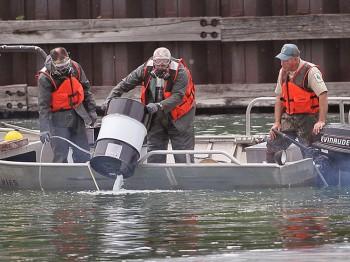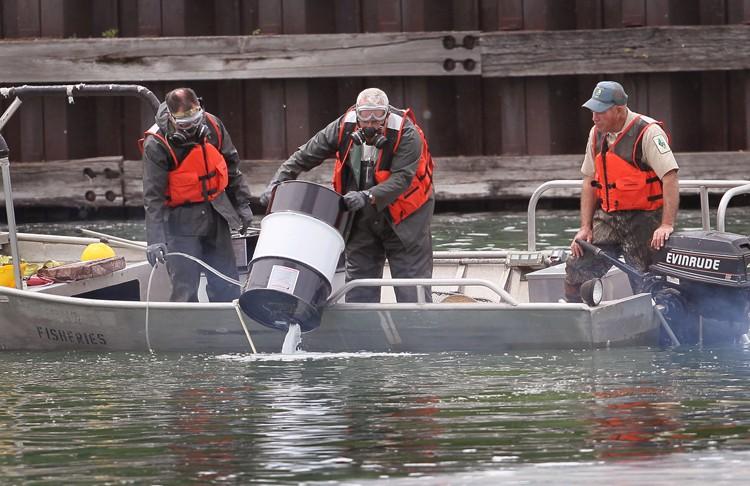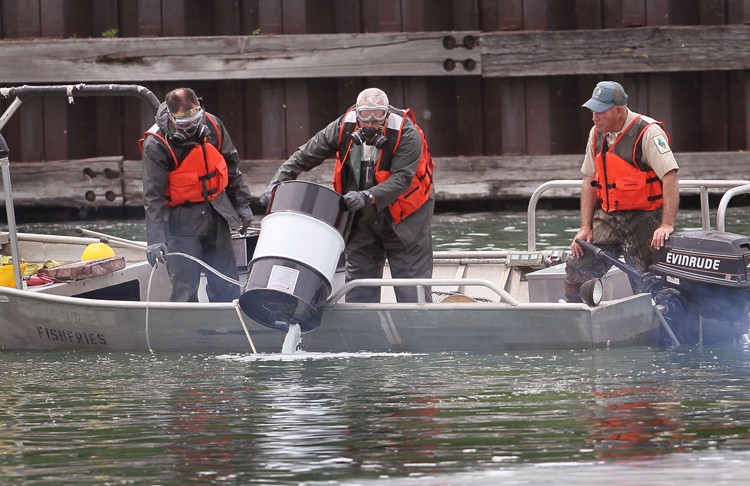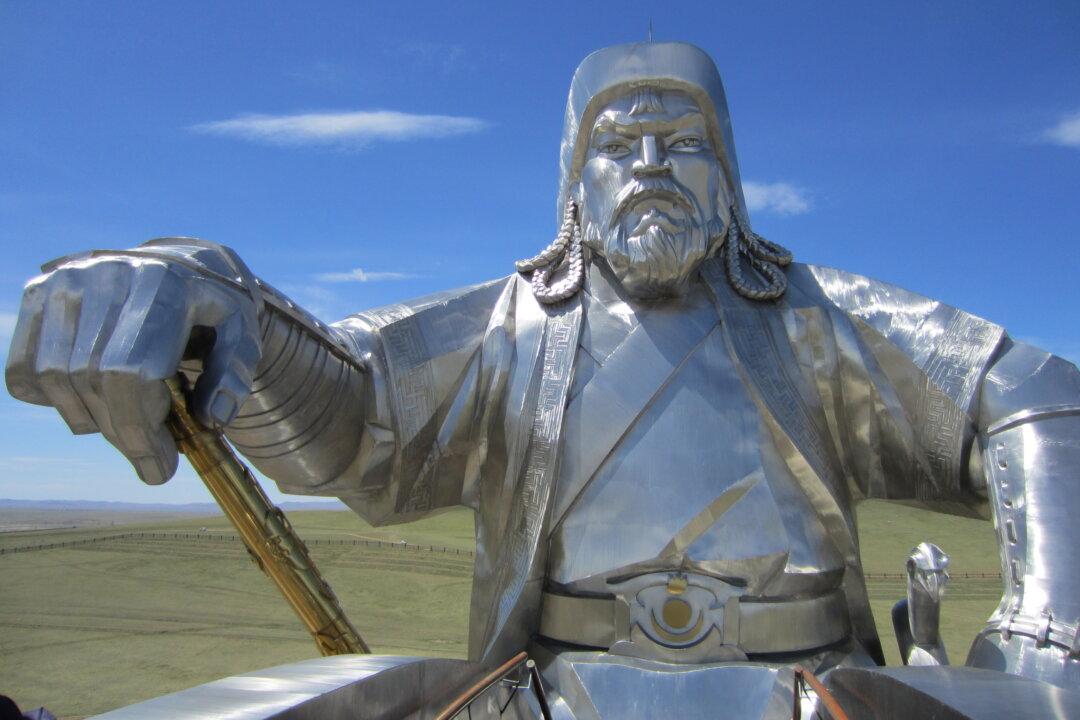Great Lakes Restoration
The Great Lakes are among the world’s largest supplies of fresh water. An insidious environmental villain, climate change, threatens them.

Workers with the Asian Carp Regional Coordinating Committee dump a chemical into the Little Calumet River to kill all of the fish in an approximately two-mile stretch of the river on May 20, 2010, in Chicago, Ill. Scott Olson/Getty Images
|Updated:





